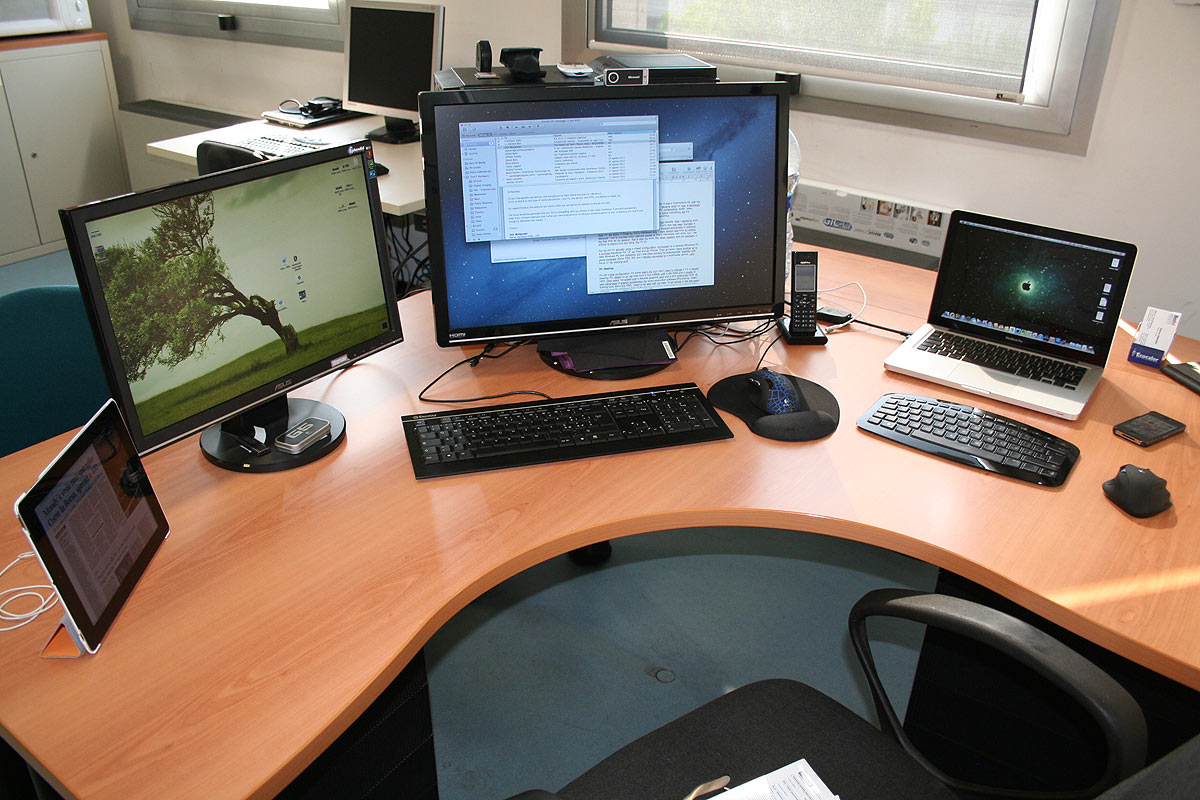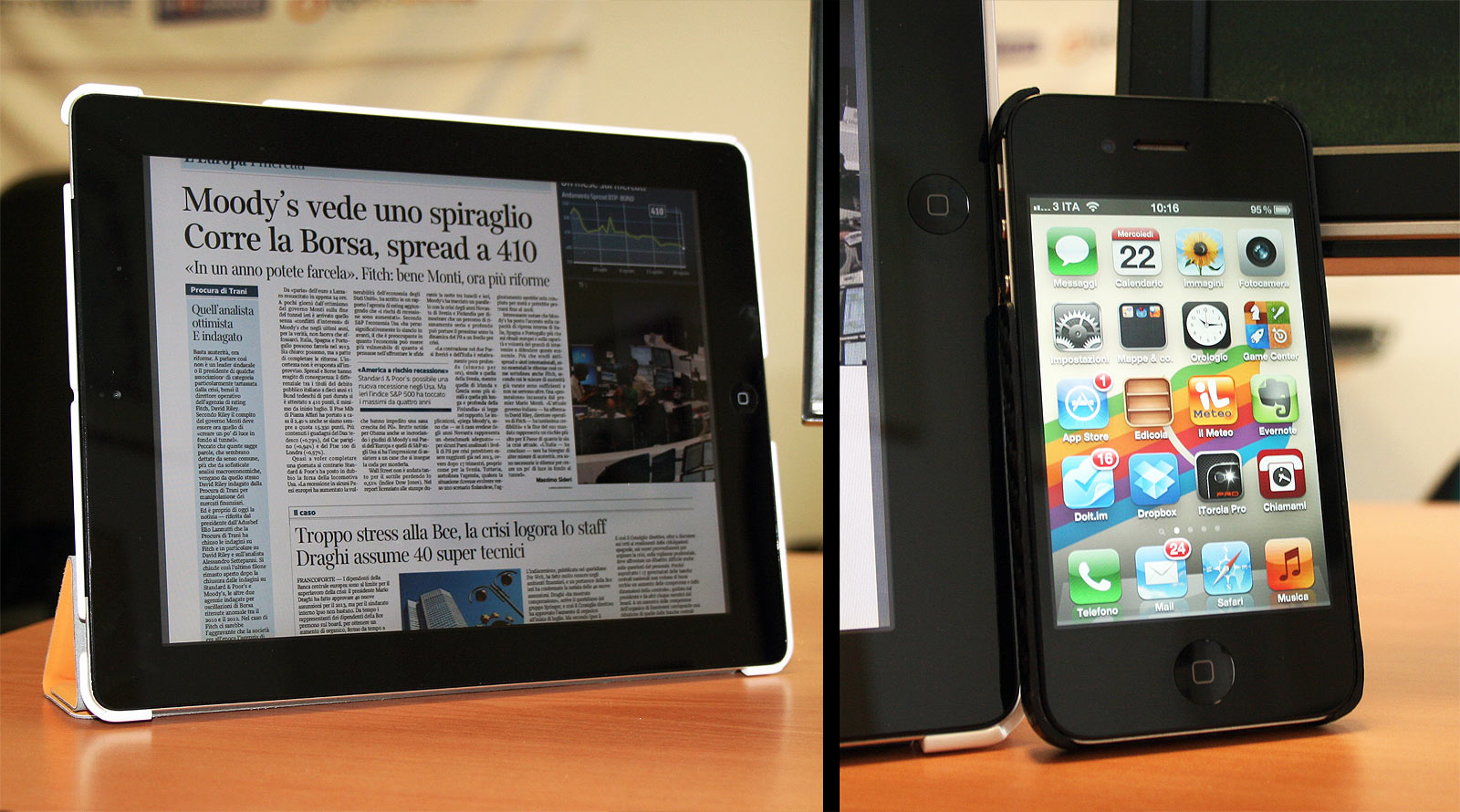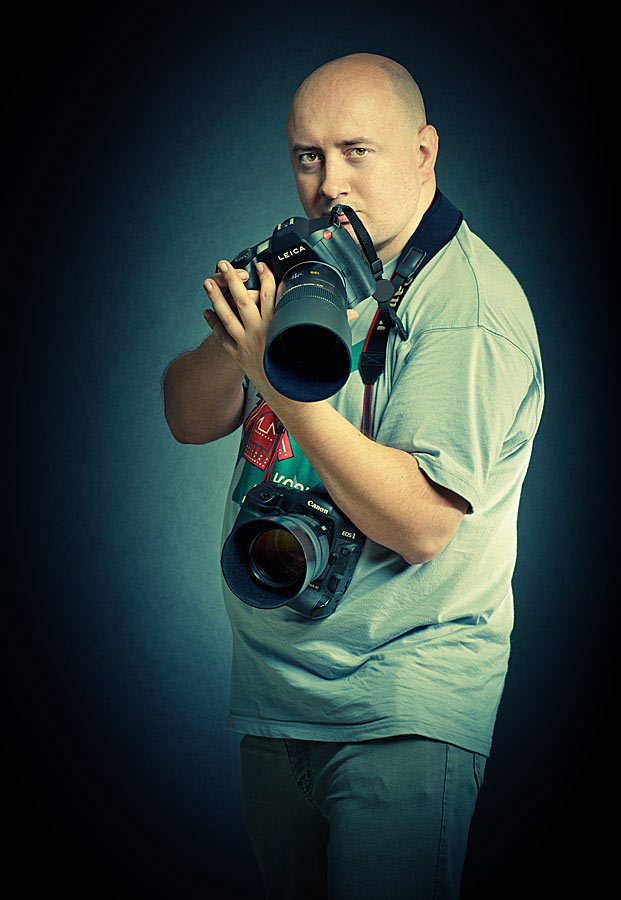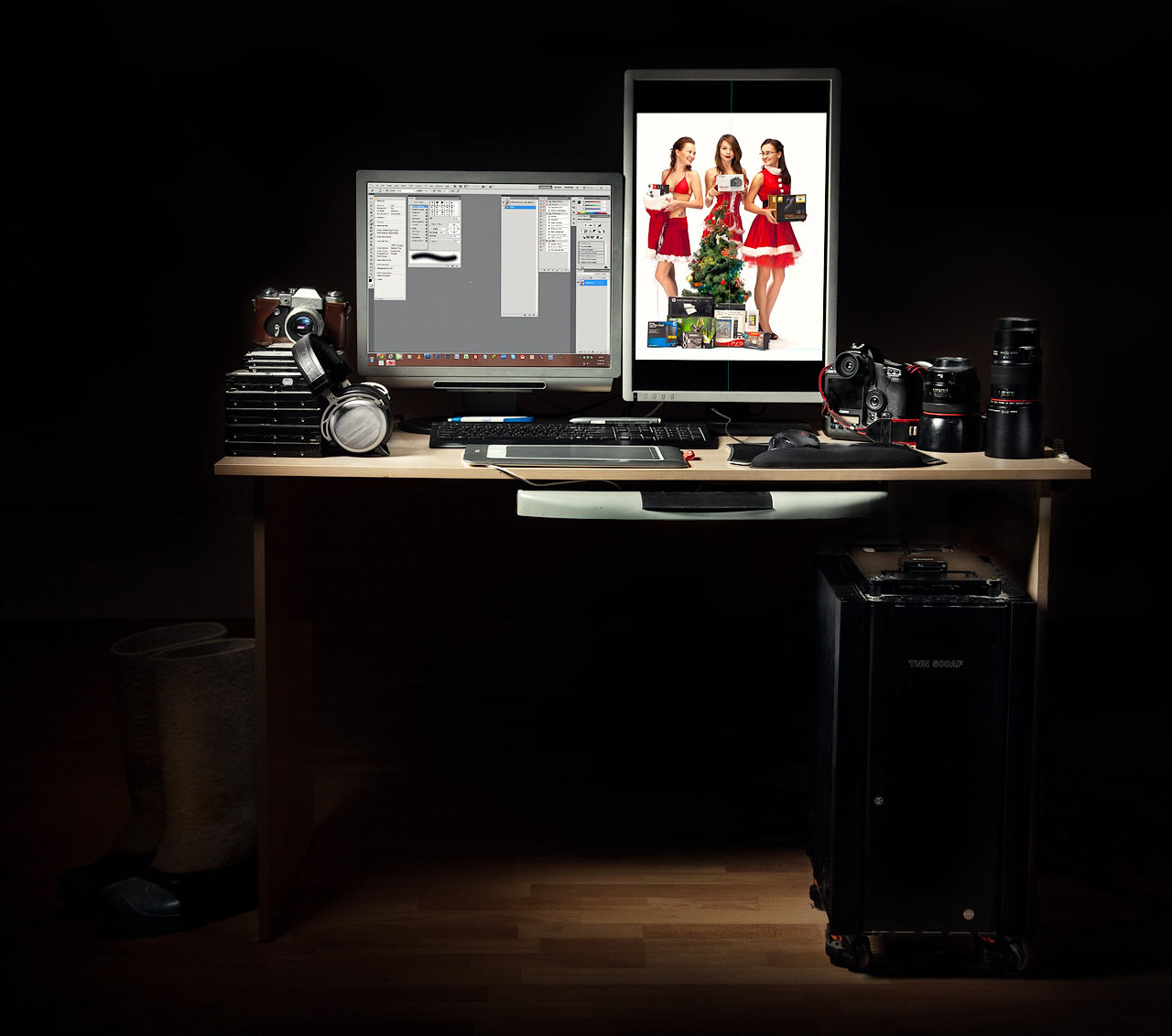Meet The Editors Of Tom's Hardware (And Their Technology)
Germany: Benjamin Kraft's Mobility
When I’m working on the go or attending a trade show, I rely on my Apple MacBook Pro 13” (2010). That’s the model with a Core 2 Duo and the Nvidia GeForce GT 320M GPU integrated in the chipset. I have had an on-again off-again romance with Apple computers, and this is my second Mac laptop (the first being a woefully underpowered white iBook G3 at 800 MHz, and yes, that one actually did eat my homework).
After a short affair with an Acer, I returned to the fruit-themed computer maker. As it turned out, though, this Mac was a good choice. I love its sturdy all-aluminum exterior and its fantastic battery life of up to 10 hours. My only gripes: it’s a bit on the heavy side, and I wish Apple would finally give the 13” MacBook Pros the same display the Airs have had for a while now; 1280x800 just isn’t enough.
On the phone side, I just got myself a Motorola Droid Razr. I’ve only had it for about three weeks, but so far, I’m really enjoying it. It’s a major step up from the mid-range Samsung Wave II that came before it. Battery life is good, build quality is great, the display is very nice, and I love the range of apps.
Finally, the only real gadget I have is an HP TouchPad I was able to snag in one of the fire sales. It now dual-boots webOS and CyanogenMod 9 (Android 4.0.4). Although, to be honest, I can’t remember the last time I actually fired up webOS. And I’m really looking forward to those nightly builds of CM 10!
Italy: Andrea Ferrario's Bio
I started to work for Tom's Hardware Italy in 2003, and now I'm the editor-in-chief of the Italian site. I manage all editorial aspects, start new projects, and in the little remaining time I follow the mobile channel (smartphones and tablets). I’m lucky enough to say that my job is also my passion, and this motivates me to dedicate most of my time to it.
For personal use at home I have a modern Windows-based PC and notebook, but I use them primarily for entertainment. Speaking of entertainment, I also have game consoles (Xbox, PS3, Wii) and a Boxee connected to a multimedia server. But let’s focus on the work stuff...
Italy: Andrea Ferrario's Desktop
My Windows PC is fairly old, but I don’t really need to update it. It’s a regular desktop based on an old Intel Core 2 Duo E6600 with 4 GB RAM and a couple of hard drives. Over the years, I’ve only upgraded its discrete graphics in order to take advantage hardware acceleration in certain production applications. I also added a more enterprise-oriented disk to store my important data in a safer way. Not that it matters much; I've also migrated all of my truly important data to the cloud. I have some backed up to an external NAS, but I prefer multiple locations to be safe rather than sorry.
Get Tom's Hardware's best news and in-depth reviews, straight to your inbox.
The operating system I use is Windows 7, and I’ll install Windows 8 as soon as possible. It’s time for a refresh. I use this PC primarily for Photoshop, Vegas, Excel, PowerPoint, and an HTML editor.
I use a dual-display configuration with a primary 27” panel and a secondary smaller display. Despite its age, this PC is still pretty fast. It doesn't boot particularly fast, but I'm hoping that a fresh Windows installation will give it a couple more years of life.
Italy: Andrea Ferrario's Laptop
My mobile platform is a pumped-up 13" MacBook Pro, based on a 2.7 GHz Core i7, complemented by 16 GB of RAM and a 240 GB SSD (Corsair GT). The memory and storage were what I upgraded after I bought the system, and I upgraded it because it simply needed more capacity for the software I need to run while I'm away from the office. Video editing, Photoshop, and other production work needs to be done quickly, and I don’t want to waste time.
The 13" display works for me, but only because this is a Mac. Despite the small screen (and relatively low resolution), I can use many applications and switch between them very quickly, thanks to the multi-gesture touchpad. This feature is what pushed me to buy a MacBook. It’s also sturdy, and the overall size is very good for traveling around.
I also use my Mac to manage email because I prefer its client over other mail software. When I’m in the office I connect it to the 27” LCD display via HDMI so I can switch from my Windows-based desktop to the MacBook at the touch of a button. I guess you could call it a "double-monitor, double-OS" configuration.
Italy: Andrea Ferrario's Mobility
I test every smartphone and tablet I can get my hands on, so most of the time I'm using an Android-based product. Having said that, my primary mobile phone is an iPhone 4S, mostly because when I’m not in the office, I feel comfortable using a phone that lives in the same ecosystem as my laptop. I use the MacBook Pro when I travel, so it is very convenient to share iPhone pictures and video between them.
I think it's fairly safe to say that iPhone apps are a little better than the ones available for Android, in general. I’m not an iPhone addict, but I decided to adopt it as my official smartphone in respect of other stuff I use. Perhaps a phablet like the Note 2 will be my next purchase.
As for tablets, most of the time there's one Android-based device and an iPad in my briefcase. I would not exchange the iPad for an Android tablet, though. I use tablets primarily for reading technology news feeds and the newspaper, and I find that the iPad is superior for those tasks. I like to have everything synchronized, so it helps that I can switch from the iPhone to iPad without glitches.
I'm currently considering a convertible notebook/tablet, but I need time to gather some experience with the Windows 8 ecosystem to decide if it is a good solution.
Russia: Stanislav Vasiliev's Bio
My name is Stanislav Vasiliev, I'm the chief of Tom's Hardware's Russian branch. For me, this job is a mix of a beloved hobby and interesting work, as I'm a big fan of all that is high-tech. I consider myself a power user and an early adopter.
I was a little kid when I got my first computer (it was a ZX Spectrum 48K with a tape recorder, hooked up to an old color TV). I used it for gaming, Basic programming, and Assembler experiments. Then, we purchased a PC, a 386SX 20 MHz with 1 MB of RAM and a monstrous 80 MB hard drive. I was influenced by its high-end VGA graphics, and fell in love with the first-person-shooter genre: Wolfenstein 3D, Spear of Destiny, Corridor 7, and many others. Doom was the next big game, and it required a serious upgrade: a FPU and 3 MB of additional RAM. Subsequent games like Doom II, Heretic, Hexen, DN3D, Quake, and Unreal required more and more horsepower, and I got pulled into the infinite upgrade process. When a good game like Crysis arrives, I arrange a day or two to play it through with a high-end platform so I can immerse myself in the game world.
Gaming wasn't my only interest, of course. In school, I helped run our Novell LAN. I also set up the first x86 computers in my own and nearby high schools. I repaired PCs for a lot of neighbors, started modeling in Autodesk 3D Studio, and hardly studied programming. Many years later, at the Comtek show in Moscow, I made friends with a guy in ATI's booth, and he influenced me to write more about hardware.
Now I have a wife and a two-year-old daughter. My little girl loves hardware too; she is able to use a lot of iPad software by herself, and she really likes the new Microsoft Arc Touch mouse because of its plasticity and blue light. It's fun to live in a connected home and see how a little child uses devices I couldn't even imagine in my infancy.
The work I do for Tom's Hardware in Russia is complex and difficult to describe without a lot of detail. Officially, my position in the team is called publisher, but I'm responsible for much more. I'm primarily focused on managing the editorial team, but I also direct how and what the website provides to our readership: services, new functions, content, and even the interface. For years I also acted as a chief editor, writer, test lab manager, and even photographer. This means doing everything from writing/editing articles and reporting to fashion photography (like the shots required for our local holiday gift guide).
Our editorial office is located in Moscow where the test lab, editor-in-chief, and our editors have their desks. Right now I prefer to work from my home office when I'm in the Moscow region, as it's more productive. Because of this, my home computer is a multifunctional workhorse that serves all my needs: work, lifestyle, and hobby. Considering that I'm also an experienced photographer, DSLR, and medium format camera user (shooting digital is my second serious beloved hobby), you may understand why my PC is configured unusually and why it has to be fast.
Russia: Stanislav Vasiliev's Desktop
My desktop is built around the latest Intel Core i7-3960X CPU, and is equipped with 32 GB of RAM, a pair of SSDs in RAID 0 (for speed), and a dedicated SSD (for the Adobe Lightroom database and thumbnails cache). It also has a RAM drive for the temporary files that software generates. This helps speed things up, increasing the life of the SSD. I'm not a big fan of frequent upgrades, so I expect to stick with this system for a few years. I previously used Intel's "Skulltrail" platform, and was satisfied with its performance for more than four years. A long lifetime with enough speed for the latest software is my priority.
For GPU acceleration I use a simple and cheap GeForce GT 520 card, but it's acceptable for my needs because it's equipped with 2 GB of RAM. That extra graphics memory helps OpenGL acceleration in Photoshop, and it's visibly better than 1 GB if you work with high-resolution source files that include layers. You may think the GeForce GT 520 is a strange solution for a PC with a powerful processor, but I don't have much time for gaming anyway, and I need to optimize the Adobe software I use.
Even more important is that I prefer a silent office; the low-power, passively-cooled, and silent graphics card really complements my older case, a passively-cooled Zalman TNN 500AF (a massive 32 kg aluminium tower) that hosts all the hardware inside. The main reason for sticking with this enclosure is simple: my goal is to build a computer that generates no noise at all, but is as powerful as possible. Because of this, my desktop system has no mechanical parts. Even the power supply is passively-cooled, and the system does not include a conventional hard drive.
The faster your PC can churn through work, the more time you have for other things. This is especially the case when you deal with digital photos and video. So, a six-core CPU is also important to me. Even while processing a huge export in Lightroom, operating as a real-time Air Video transcoder for my wife and daughter, and engaging in a Skype conference, this monster performs without a hiccup. The final piece of the system is an audiophile-class external DAC paired with great beyerdynamic T1 headphones. I really appreciate high-quality audio.
Russia: Stanislav Vasiliev's Network
The most important part of my digital home and office is the gigabit-class network and storage system. We live in a country house, so the LAN is stretched across a few floors, and includes four routers to cover every corner with good Wi-Fi and fast Ethernet. Even a large part of the yard is Wi-Fi-accessible. Most of the hardware is from Netgear. It's stable, works 24x7, and doesn't need to be rebooted every so often.
My home features a centralized storage subsystem. Everything is there, including work documents, music, videos, photos, and 40-year-old home movies scanned from film. It's hard to imagine how much space my family requires, but it's not difficult for a NAS to handle. To eliminate the problems of duplicated data and loss of information and to keep all of the content available at any time and location worldwide, I decided that we should rely on a networked appliance instead of local storage for each family member. So, we employ a pair of NAS servers, my favorite being a Synology DS1511+ with five hard drives inside.
We use it not only for current storage, but as a shared download station, surveillance system, and personal cloud. The storage is easily accessed from everywhere and from any platform (Android, iOS, Windows, and Mac). It's a DLNA/UPnP source for our TVs and set top boxes, and it keeps all the data we need. It backs up our computers and laptops. Even our iTunes databases are stored there instead of locally. We really like the Synology and third-party apps for iOS to control the NAS. For me and my family it's not just a NAS, but more of a digital home center.
Russia: Stanislav Vasiliev's Mobility
For years, I searched for a lightweight mobile solution to use on the road. I tried a lot of notebooks, subnotebooks, slates, and even UMPCs. But I was only ever partially satisfied. My personal goal was to find a device good for work and leisure, with enough battery power to last for the whole day. It'd need to be a device able to replace most gadgets in a single package. Thanks to Steve Jobs, I found it. For mobility, I use the latest iPad with its Retina display, along with an iPhone. I use some Android-based devices as well, but mostly the iOS stuff does the job for me. It would take a lot of time to tell you all of the things I use the iPad and iPhone for, but these are definitely the most used hardware in my arsenal. I carry them with me all the time.
Is iOS just a toy? Definitely not. It is able to do almost everything I need, from business planning to in-car GPS navigation (I use iPad there with a special car kit). All of my communication is done with iPad and iPhone: e-mail, Skype, FaceTime, Facebook, Twitter, Livejournal, Vkontakte, and so on. Editorial management, remote computing, access to home and office LAN resources all get handled on my iPad, too. iOS is also great for photography. In addition, these devices are often used for self-education, reading PDFs, and some paperwork. I even write articles on the iPad with a Bluetooth keyboard, and sometimes without it. Really, this duo of iOS-based devices is most important to me on the road.
Don Woligroski was a former senior hardware editor for Tom's Hardware. He has covered a wide range of PC hardware topics, including CPUs, GPUs, system building, and emerging technologies.
-
amuffin Uberragen21But do they know how to proof read before posting?ahahaha....AHAHAHAHAHAAH!!!!Reply -
army_ant7 I think I'm turning gay! :lol: But seriously, I admire these guys! Chris and Don, many thanks! You have my great appreciation and a lot of the members here at TH shouldn't take you guys for granted. Looking forward to more cool reviews!Reply
I'd also like to thank every other editor (or anyone who contributes to the articles) whether they're listed in this pic article or not! LONG LIVE TOM'S HARDWARE!
(BTW, for some odd reason, I thought you were German, Don. Sorry about that. :p) -
cangelini Uberragen21But do they know how to proof read before posting?I challenge you to track down errors in our feature content. I spend all day most days proofreading ;-)Reply -
cangelini army_ant7I think I'm turning gay! But seriously, I admire these guys! Chris and Don, many thanks! You have my great appreciation and a lot of the members here at TH shouldn't take you guys for granted. Looking forward to more cool reviews!I'd also like to thank every other editor (or anyone who contributes to the articles) whether they're listed in this pic article or not! LONG LIVE TOM'S HARDWARE!(BTW, for some odd reason, I thought you were German, Don. Sorry about that. )I'm sincerely glad you enjoy the work we do. :)Reply -
dudewitbow majudhuno doubt about apple marketing hereReply
I would think the editors needed something thin and light to carry around. before the advent of ultrabooks and sleekbooks, there arent many choices for extremely thin strong laptops(disregarding cost as a factor). Albeit I was never a fan of apple pricing, their engineers are really good at making the laptops thin and efficient heat wise. The thin counterpart to a macbook on windows would be the razor blade, but that thing is even more expensive than a mac. It also doesn't hurt to use a unix based operating system as a mobile unit. -
mayankleoboy1 Great read! Been waiting for an article like this for a loong time.Reply
No love for Andrew Ku and Crashman ? they do ~ 50% of the articles -
cangelini Consider also that I have a Lenovo Carbon here in the lab, which is badass, aside from the touchpad, but also more expensive than an Air.Reply -
cangelini mayankleoboy1Great read! Been waiting for an article like this for a loong time.No love for Andrew Ku and Crashman ? they do ~ 50% of the articlesThose two are camera-shy. If folks like this one, though, we have a ton more editorial guys around the world. We just have to trick them into participating.Reply








